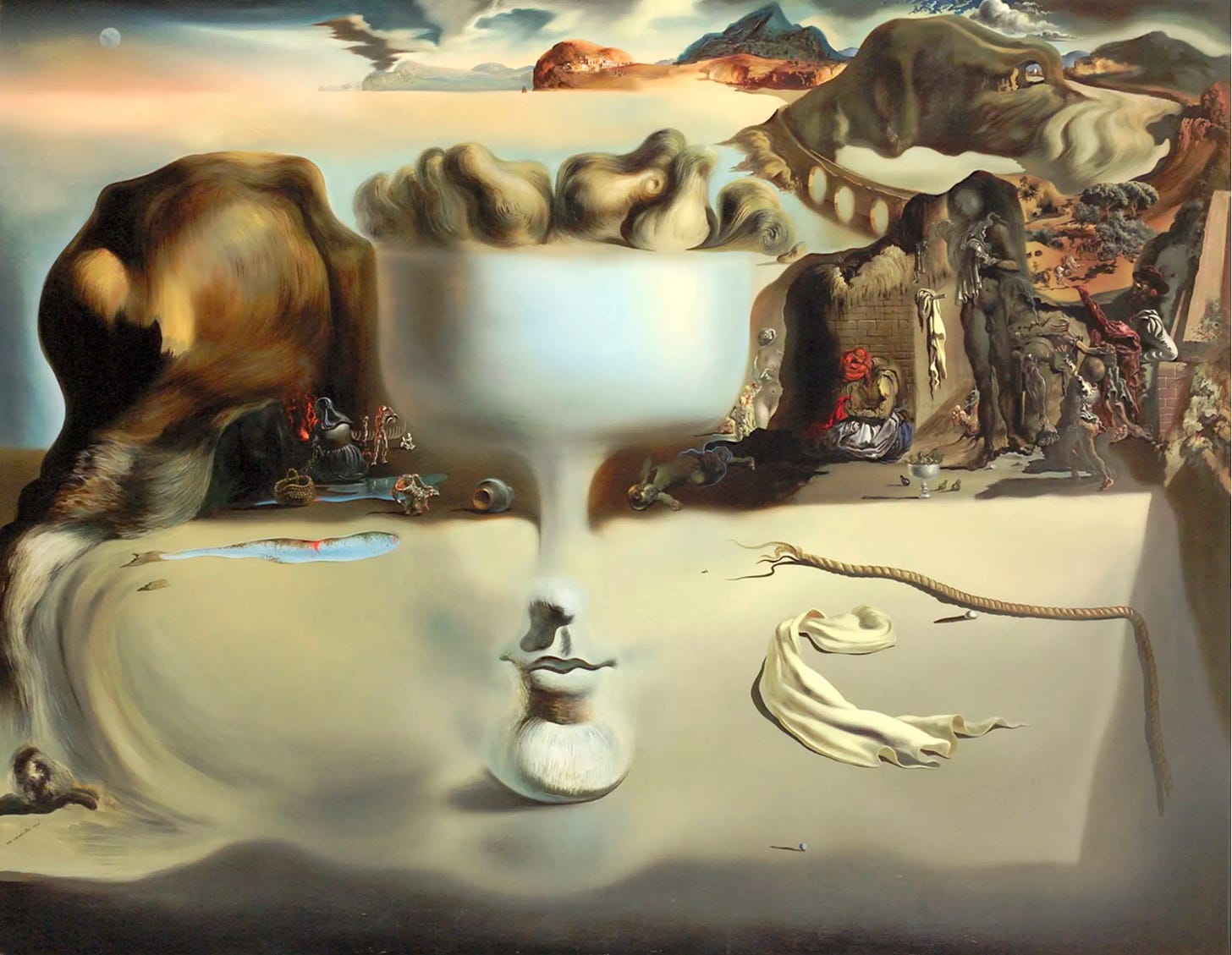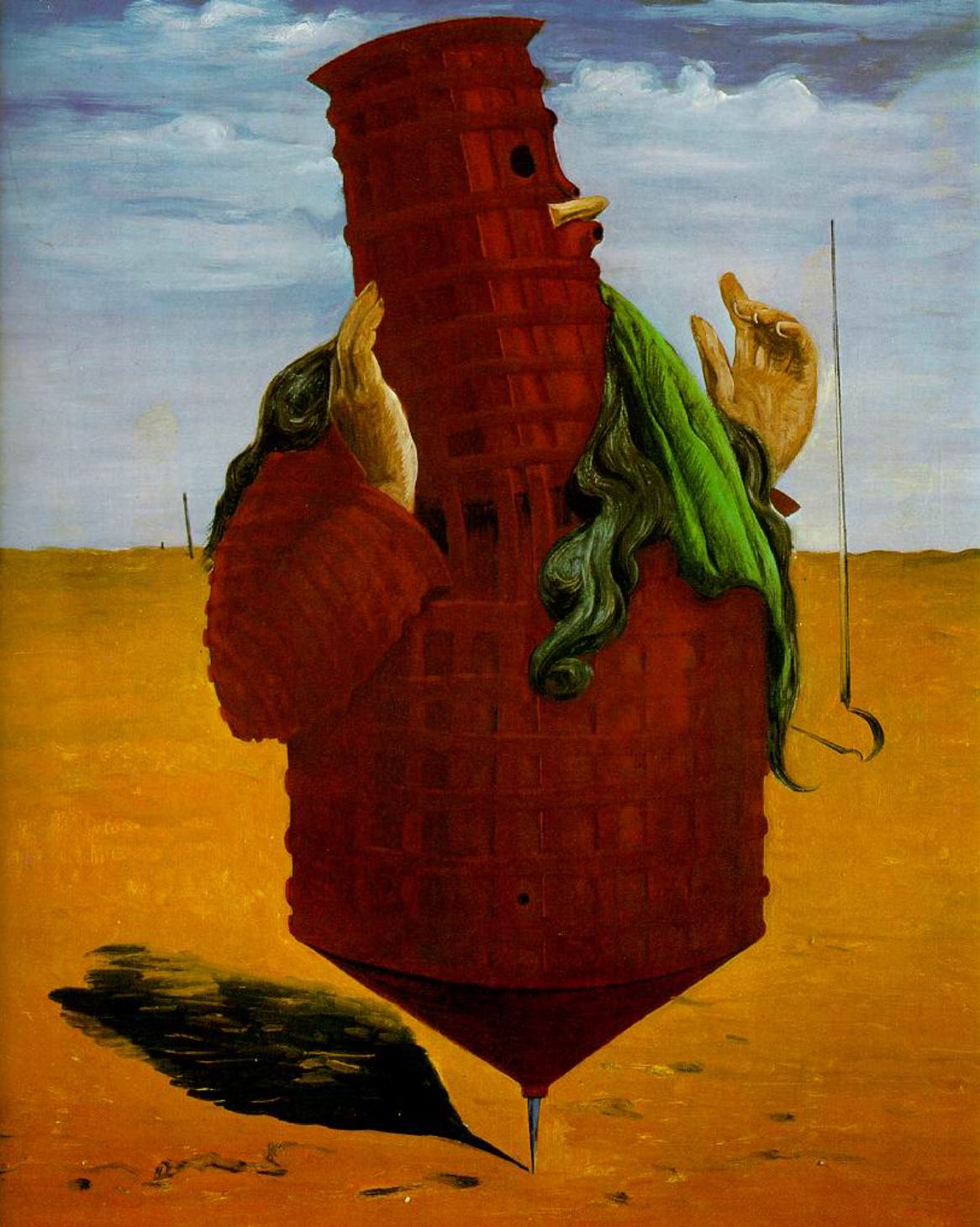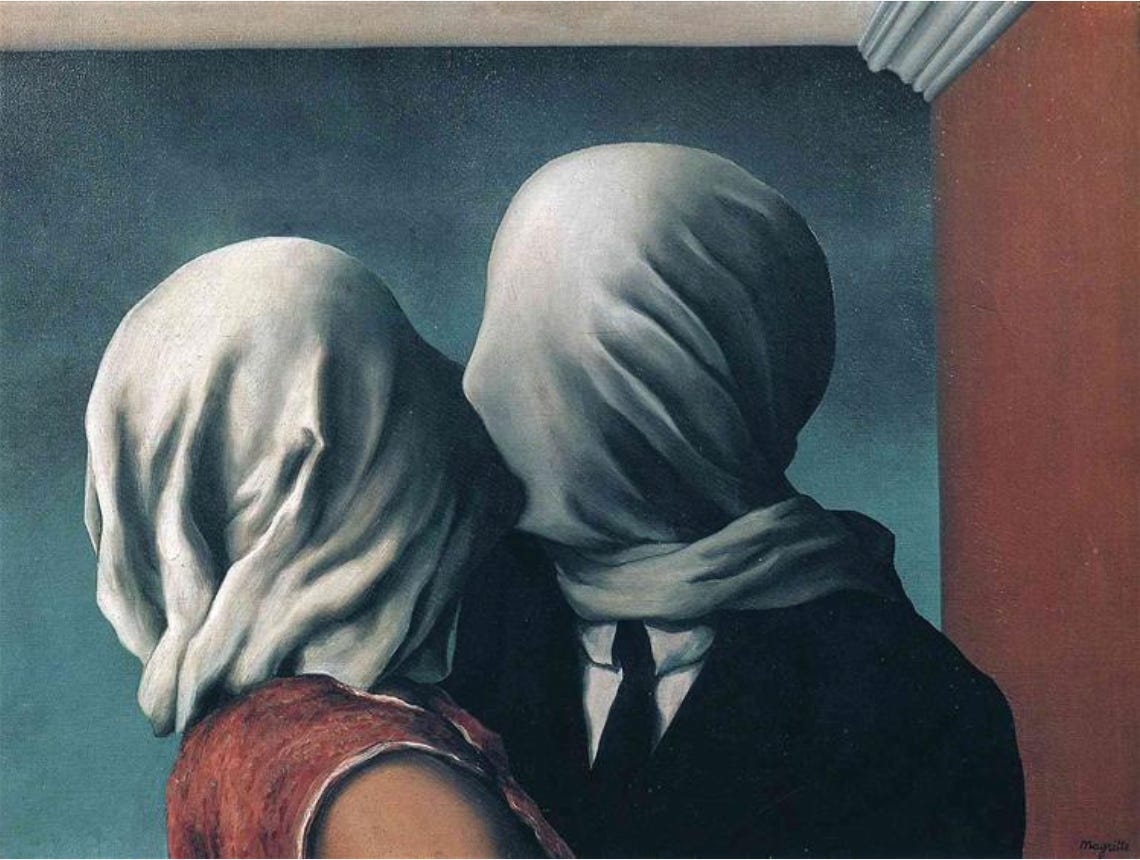Welcome aboard The Bus!
The Stop
Today’s Stop is the first in a new occasional series about various artists and art forms, beginning with one of my favourite schools of art: Surrealism. Emerging in Europe between the first and second world wars, Surrealism attempted to ‘revolutionise human experience’ by striking a balance between a ‘rational vision of life with one that asserts the power of the unconscious and dreams’. Strongly influenced by Sigmund Freud and believing the unconscious the source of imagination, the fundamental tenets of Surrealism were outlined by the poet and critic André Breton in The Surrealist Manifesto (1924). According to Breton, Surrealism’s purpose was to unite the ‘conscious and unconscious realms of experience so completely that the world of dream and fantasy would be joined to the everyday rational world in ‘an absolute reality, a surreality’’.1
Five Surrealists
Clicking the artist’s name will take you to the respective Encyclopaedia Britannica entry. For less information and some photos of their work, click the link to the Tate Modern. And if you’re really interested - click both!
Hans (Jean) Arp (1887-1966) was a German-French sculptor, painter, and poet. A leader of various early to mid-20th century European avant-garde art movements, Arp was associated with the Surrealists in the 1920s. Among other styles, Arp was known for his use of non-traditional media including collages, wooden reliefs and embroidery. For more information, see: Hans (Jean) Arp (Tate Modern).
Salvador Dalí (1904-1989) was a Spanish painter and printmaker who’s work is noted for its ‘explorations of subconscious imagery’. From 1929 to 1937 he created the series of paintings which would make him into the ‘world’s best-known Surrealist artist’. Many of these depict a recurrent dreamworld in which - produced in ‘meticulous, almost painfully realistic detail’ - Dalí ‘juxtaposed, deformed, or otherwise metamorphosed’ commonplace objects within ‘bleak sunlit landscapes’. For more information, see: Salvador Dalí (Tate Modern)2
Max Ernst (1891-1974) was a German-American painter, sculptor, printmaker, graphic artist, and poet who was a pioneer of both European Dadaism3 and Surrealism. A leading advocate of the importance of irrationality in art, Ernst originally trained as a psychiatrist and philosopher before - despite having no formal art training - abandoning his studies to take up painting. For more information, see: Max Ernst (Tate Modern).
René Magritte (1898-1967) was a Belgian artist whose ‘bizarre flights of fancy’ led him to become one of the most prominent Surrealist painters. Blending ‘horror, peril, comedy, and mystery,’ his works would be characterised by recurring symbols: the ‘female torso, the bourgeois ‘little man,’ the bowler hat, the apple, the castle, the rock, the window, and other ordinary objects’ which he would place in either ‘unusual or unsettling situations’. For more information, see: René Magritte (Tate Modern).
Yves Tanguy (1900-1955) was a French-American painter who applied the principles of automatism to his version of Surrealism. Tanguy believed that automatism - ‘creating spontaneous associations with no preconceived ideas’ - allowed him to express the inner workings of the unconsciousness. Built on this tenet, Tanguy’s work consists of ‘timeless, dreamlike landscapes’ populated by ‘completely invented’ forms which have ‘no reference to reality’. For more information, see: Yves Tanguy (Tate Modern).
The Detour
Today’s Detour is to Designing Tomorrow: The Futurism of Syd Mead, a short (8:37) documentary introducing the work of the industrial and futurist designer Syd Mead (1933-2019) who, over a nearly 60 year career, produced a dazzling array of futuristic visuals to illustrate everything from car and kitchen advertisements to set designs for films such as Blade Runner (1982). Worth it for the nostalgia of looking back to see what the past imagined the the future might have looked like.4
Designing Tomorrow: The Futurism of Syd Mead
The Recommendation
Today’s Recommendation is David Lynch’s Mulholland Drive (2001). A classic example of Lynch’s take on Surrealism, the film is a mystery involving a series of interlocking vignettes following Betty - an aspiring actress who has recently arrived in LA in the hope of making it big in Hollywood - and an amnesiac woman who, after surviving a car crash with no memory of her past, names herself Rita. The two team up to find out Rita’s true identity, but as the story progresses the lines between dreams, hallucinations and reality begin to blur. And then the story really gets going.
Mulholland Drive (2001) Trailer
The Sounds
Today’s playlist is a selection of five tracks which - whether overtly or not - have a Surrealistic bent:5‘One of These Days’ (Pink Floyd, 1971), ‘Debaser’ (Pixies, 1989), ‘Stuck Inside of Mobile with the Memphis Blues Again’ (Bob Dylan, 1966), ‘Mind Mischief’ (Tame Impala, 2012) and ‘Penny Lane’ (The Beatles, 1967). Enjoy!
The Thought
Today’s Thought is from the French Surrealist poet and novelist, Philippe Soupault:6
‘There is nothing more surreal than reality itself.’
If you have a thought on this Thought - or any part of today’s issue - please leave a comment below:
And that’s the end of this Stop - I hope you enjoyed the diversion!
Thanks to everyone who subscribes - your interest and support is truly appreciated. If you like The Bus, please SHARE it with a friend or two.
If you haven’t climbed aboard The Bus, please do!
If you like The Bus, why not check out other newsletters?
The Sample sends out articles from blogs and newsletters across the web that match your interests. If you like one, you can subscribe with one click.
Until the next Stop …
I’ve been a fan of Surrealism for as long as I can remember; the paintings of Dalí in particular gripped my imagination. (Like many college students) I had posters of his prints in my dorm room, I’ve pored over numerous books of his works, and have been lucky to see many of the originals in various museums all over the world. Something I’d encourage anyone with any interest in Dalí to do. Sources for today’s Stop include Surrealism (Britannica), Surrealism (Tate Modern) and the eponymous Britannica entries for each of the artists.
You could also check out The Dali - the website of the Salvador Dalí Museum in St Petersburg, Florida. I was fortunate to visit it in October 1995, and hope to return at some point in the future. It’s an astonishing collection of Dalí’s work - and absolutely worth visiting.
For more about Dadaism, see: Dada (Britannica).
Mead is quite fascinating, so he will potentially show up in a future Stop. In the meantime, check out: Syd Mead.
Of all these, the Pixies track is probably the most overtly Surreal as it directly references the classic surrealistic film by Luis Buñel and Salvador Dalí: Un Chien Andalou (1929). Nevertheless, whether it’s the single lyric on the Floyd track or the word salads offered up by the other three, they all possess that Surrealistic real/unreal quality. Slicing up eyeballs, indeed.
For more about Soupault, see: Philippe Soupault (Britannica).












